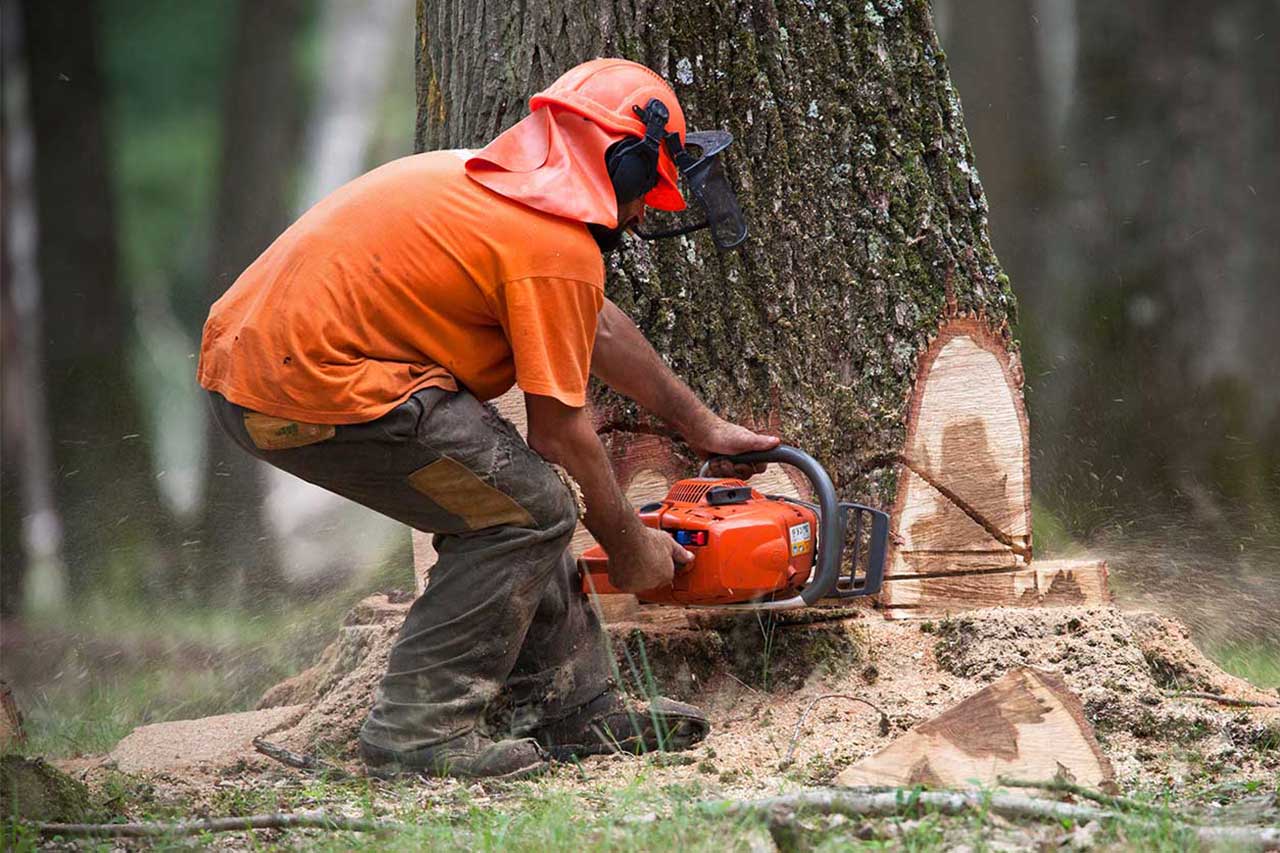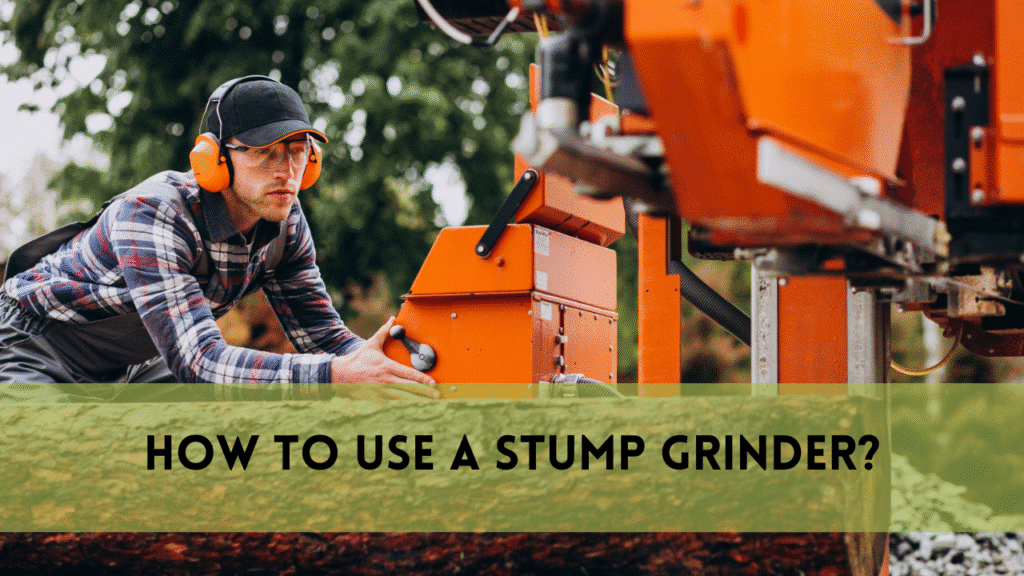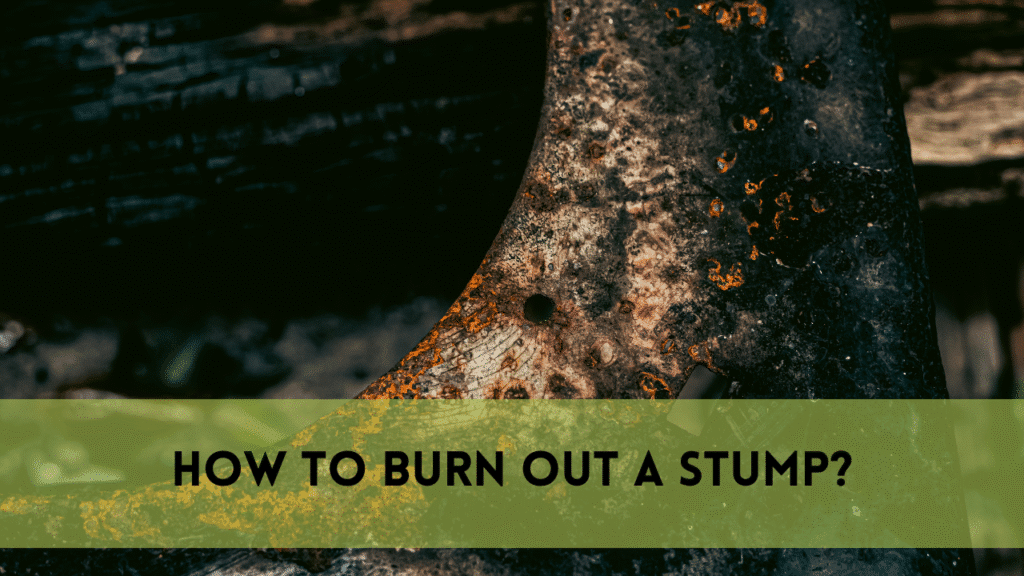Stump grinding is a highly effective and efficient procedure for removing tree stumps from the ground, leaving no sign of the once towering tree. Whether you’re a homeowner dealing with an unattractive stump in your yard or a professional arborist looking to clear a building site, understanding how does a stump grinder works is critical.
Stump grinders, with their powerful and specialized machinery, can turn a tree’s remains into mulch, wood chips, or fine sawdust. This process not only improves the appearance of your outdoor space, but it also eliminates safety hazards and enables the use of the cleared ground.
What Are the Benefits of Stump Grinding?
Stump grinding provides a number of useful benefits, including the effective prevention of undesired tree regrowth. Aside from that, it improves the visual attractiveness of your property by removing unsightly stumps.
Furthermore, it reclaims valuable yard space that would otherwise be unusable due to the presence of tree stumps, allowing for landscaping, patio development, and outdoor furniture placement.
Stump grinding also greatly improves the safety of your yard. Tree stumps frequently offer tripping hazards and are difficult impediments for lawnmowers, making it critical to ensure a safe workplace.
Whether you want a safe play area for your children, a safe walking path, or a hassle-free lawn mowing experience, stump grinding solves these problems.
Finally, decomposing tree stumps can attract dangerous components, including mold, fungi, and pests. These unwanted visitors have the potential to spread throughout your landscape, threatening other plant life and causing significant damage. Choosing stump grinding not only improves aesthetics and safety, but it also protects the health of the entire outdoor environment.
The Main Component of Stump Grinder
Cutting Wheel:
The stump grinder’s workhorse is the cutting wheel. It has sharp, revolving steel teeth or cutting blades that make direct contact with the stump, reducing it to little wood chips or sawdust over time. The cutting wheel is not only powerful, but it is also height adjustable, allowing operators to manage the depth of the cut and grind away the stump efficiently.
Hydraulic System:
The hydraulic system of a stump grinder is the driving force behind its performance. This system regulates the movement of the cutting wheel, allowing the stump to be effectively ground. Hydraulic power offers the precision and force needed for this heavy-duty task. Operators may regulate the hydraulic system to raise or lower the cutting wheel and move it horizontally, allowing them to tackle stumps of varied sizes and forms.
Control handle:
The control handle is the interface between the operator and the stump grinder. It allows the operator to steer and maneuver the equipment while working on the stump. Operators can regulate the movement and speed of the cutting wheel with the control handle. This component is critical for achieving precise and controlled grinding.
Debris Discharge Chute:
After grinding, the stump is converted into mulch, wood chips, or sawdust. The debris discharge chute is in charge of diverting this processed waste away from the work area. It prevents debris from accumulating around the stump and obstructing the operation, contributing to a clean and efficient work environment.
Support Frame:
The support frame is the stump grinder’s backbone, holding all of the components together and providing structural stability. Depending on the model, the frame may be mounted on wheels or tracks, allowing for mobility and easy relocation. This mobility is useful when moving the grinder from one stump to another, making it versatile for landscaping and tree removal chores.
Safety measures:
Stump grinders are outfitted with a variety of safety precautions to safeguard the operator and anyone in the vicinity. These features include a safety bar, emergency shut-off switches, and guards. The safety bar enables the operator to immediately stop the machine in the event of an emergency. Additional safety measures are provided via emergency shut-off switches, and guards protect the operator from potential threats such as flying debris.
How Does a Stump Grinder Work?
Stump grinding is a highly effective way of removing tree stumps from the ground while leaving no sign of the once-standing tree. The stump grinding procedure involves the use of specialized machinery known as a stump grinder. This is how stump grinding works:
Preparation:
Before starting the grinding operation, the operator evaluates the stump and the surrounding region. This inspection includes looking for potential obstructions, such as rocks or debris, that could damage the grinder’s cutting wheel.
Grinder Position:
The stump grinder is placed close to the stump to allow the cutting wheel to make direct contact with the stump’s surface. It is critical to steady the grinder to avoid unintentional movement during operation.
Engaging the Cutting Wheel:
The operator starts the stump grinder’s motor, which powers the cutting wheel. This wheel is outfitted with sharp, revolving steel teeth or blades designed to grind away the stump’s wood. The operator then engages the cutting wheel, causing it to lower onto the stump’s surface.
Grinding the Stump:
The cutting wheel begins to rotate, and the operator directs it across the surface of the stump. Sharp teeth or blades make contact with the wood, gradually reducing it to little wood chips, sawdust, or mulch. The operator regulates the depth of the cut, allowing for the total removal of the stump while leaving a flat and level surface in its place
Systematic Progress:
Stump grinding is normally done systematically, with the operator rotating the cutting wheel back and forth across the stump’s surface. This ensures that the stump is ground down uniformly. The operator may need to modify the cutting wheel’s height and angle to reach all sections of the stump, especially if it has uneven shapes or roots emerging above ground.
The stump grinding process continues until a depth of at least 4 inches below ground level is reached. This technique involves repeatedly grinding the stump until it’s situated between 4 to 16 inches beneath the surface, ensuring the complete removal of both the stump and its intricate root system.
Upon completion of the grinding process, the stump grinder is powered off and carefully moved away from the work area. The professionals then conduct a thorough inspection to verify that the stump has been entirely eradicated, leaving no remnants or roots behind.
Debris Removal:
As the grinding process continues, the resulting wood chips, sawdust, and mulch are discharged from the stump grinder via a debris discharge chute. These residues are typically directed away from the work area, guaranteeing a clean and efficient operation.
Verification of Completion:
After the stump has been ground down to the desired level, the operator closes the machine. The result is a level surface with no visible remnants of the tree stump.
Why You Need Professional Help
Hiring a professional for stump grinding is a sensible decision for several compelling reasons. First and foremost, specialists have the knowledge and specific equipment required to execute the operation safely and quickly.
Stump grinding includes potentially dangerous machinery, and it can be dangerous if not done properly. Professionals also bring the benefit of experience, ensuring that the entire stump is ground down to prevent regrowth and risks.
Furthermore, they can resolve any unanticipated obstacles or issues that may develop during the process. Entrusting the job to professionals not only saves time and effort, but also ensures a smooth, hassle-free experience, leaving you with an immaculate, stump-free environment.
FAQs About Stump Grinder Work
1. What powers a stump grinder?
Stump grinders are commonly driven by gasoline or diesel engines, which provide the necessary energy to power the cutting wheel and hydraulic systems.
2. How deep can a stump grinder go?
The depth of the cut is determined on the specific grinder and its settings, although it may often reach up to a foot below ground level.
3. Can I use a stump grinder without prior experience?
Operating a stump grinder requires knowledge to assure safety and efficacy. If you lack experience, you should consider hiring a professional.
4. Are there several kinds of stump grinders?
Yes, there are numerous sorts of grinders, such as walk-behind, self-propelled, and remote-controlled grinders, each suited to different applications and stump sizes.
Conclusion
In conclusion, understanding how does a stump grinder works reveals its efficiency and practicality in the realm of tree stump removal. This specialized equipment, powered by robust engines and equipped with rotating cutting wheels, simplifies what was once a challenging and time-consuming task.
By systematically grinding down tree stumps to a manageable depth, it not only enhances the aesthetics of your landscape but also promotes safety, accessibility, and the optimal use of yard space. Whether you choose to operate it yourself or hire a professional, stump grinders play a pivotal role in transforming unsightly tree stumps into a clean, hazard-free, and vibrant outdoor environment.




